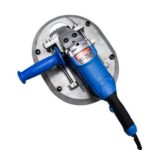- Description
Description
Cattle Dehorning Horn Cutter Machine
A precision dehorning saw with safety features to protect the operator as well as the animal – two rotating blade guards that wrap around the horn as it is being severed. Open-end design means no threading over the end of the horn. Just place V of blade guards at the desired location on the horn, start the motor and push forward, and the horn is severed in seconds, before the animal senses any pain. The cut is clean with no bruising or crushing. Features include: 3.5 hp, double insulated, right-angle grinder motor, 9 in. high-quality chrome steel blade (cuts up to 3-1/2 in. dia. horn), and bottom plate guard held on with two thumbscrews (removes in seconds for cleaning). Comes completely assembled.
USES OF BLOODLESS CATTLE DEHORNING HORN CUTTER MACHINE
After the horns are fixed, the horns are cut by an electric cutter from the bottom of the horns by an electric cutter. The angle removal speed is fast and the operation is simple. After the horns are removed, the cattle can be prevented from being injured due to fighting, especially since the breasts will not be hurt by the following cattle. Horned cattle are quieter and easier to manage.
HOW TO USE BLOODLESS CATTLE DEHORNING HORN CUTTER MACHINE
To fix the horns, just plug in the power, wait for the saw blade to become hot, push the saw blade, the horns will be removed as soon as you press it, and the cattle can hardly feel pain. Everythings gonna be allright letter.
TECHNICAL DETAILS OF BLOODLESS CATTLE DEHORNING HORN CUTTER MACHINE
| Product Name | Bloodless Cattle Dehorning Horn Cutter Machine |
| Material | Steel |
| Size | (62 x 28 x 20)cm |
| Voltage | 220V |
| Power | 1700W |
| Suitable for | Cattle |
| Feature | Bloodless, Easy to operate |
| Benefit | Improve the quality of breeding of cattle |
| Application | Animal Dehorner |
FEATURES OF BLOODLESS CATTLE DEHORNING HORN CUTTER MACHINE
- The saw blade is sharp and the surrounding design is precise, which plays a role in protecting people and animals
- Side orientation with removable handle supports two-hand operation
- User-friendly design, switch at the handle, easy to use
- Automatic circuit breaker protects carbon brush and extends motor life
- Special high torque screw with rubber shockproof, not easy to loose
- Import NSK bearing, full dust switch
- Ensure switch life is 50,000 times
- Precision design around the saw blade protects people and animals.
- Start button at the handle, easy to operate.
- 9 inches high-quality alloy circular saw blade.
- There is Double insulation protection.
WHY DEHORNING
Dehorning is the removal of the horns from cattle. It is a labor-intensive, skilled operation with important animal welfare implications. Horns are detrimental to cattle from welfare and production perspective and pose a potential safety risk to cattle handlers. Dehorning should only be done when necessary and in accordance with the Australian Animal Welfare Standards and Guidelines for Cattle to minimize the risk to the welfare of the cattle, particularly pain and distress. Breeding polled cattle is a long-term solution to the problems commonly associated with horned cattle and the issue of dehorning.
Bruising costs the Australian beef industry over $30 million each year – equivalent to $4 for every beast slaughtered. Evidence indicates that the single major cause of bruising is the presence of horns.
Horned or tipped cattle (as compared to hornless cattle):
- Can cause injury to other cattle especially in yards and when in transport
- Can cause significant damage to hides and carcass quality
- Cause more damage to infrastructure on average
- Need more space during transport
- Harder to handle in yards and crushes and can be more aggressive to other animals
- Potentially more hazardous to people.
Tipping (removal of the insensitive sharp end of the horn) is not dehorning. It does little to reduce the disadvantages of having horned cattle, for example, it does not reduce bruising, and tipped cattle can still be a danger to other cattle and handlers.
METHODS OF BLOODLESS CATTLE DEHORNING HORN CUTTER MACHINE
- Caustic Paste Disbudding.
- Hot-Iron Disbudding.
- Knife Dehorning.
- Tube, Cup, or Spoon Dehorning.
- Barnes or Gouger Dehorning.
- Keystone or Guillotine Dehorning.
- Obstetrical or Embryology Wire Dehorning.
- Hand Saw Dehorning.
TREATMENT AFTER DEHORNING
- Animals bleed freely after dehorning. This is normal and helps to clean the wound. However, bleeding should be minimized by selecting the appropriate dehorning tool, preventing overheating of calves, and allowing them to settle after mustering.
- Flystrike is a problem when animals have an open wound but if dehorning is carried out in a hygienic manner, wounds heal up quickly. Do not apply an insecticide straight on the wound, but rather around the wound. Wound disinfectants can be applied to the wound to reduce infection risks.
- Avoid leaving animals in the yard after dehorning.
- Put dehorned stock onto good nutrition.
ANATOMY OF THE HORN
The horn core is a bony extension of the skull and the hollow centre of the core communicates directly with the sinuses of the skull. The horn grows from the skin around its base, just as the wall of the hoof grows down from the skin of the coronet. To ensure no horn regrowth, it is essential to cut away 1cm of skin around the base of the horn.

METHOD OF DEHORNING
The method of dehorning should be matched to the size of the horn and the age of the animal for optimum effectiveness. The key to successful dehorning is the removal of a complete ring of hair (~1cm wide) around the horn base. The level of skill of the operator and personal preference for a particular method will also be a consideration. There is no one method for a particular animal age or horn size.
PHOTOS OF BLOODLESS CATTLE DEHORNING HORN CUTTER MACHINE
